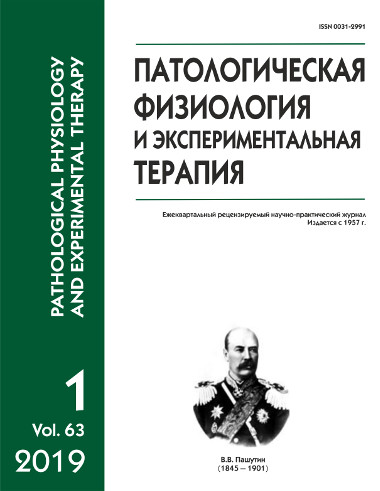The study of MMSC homing after liver resection
Abstract
The aim was to study migration of multipotent mesenchymal stromal cells (MSCS) isolated from the placenta to various organs and tissues of laboratory animals under the physiological conditions and after subtotal liver resection. Method. The MMSC cells for culturing were obtained from the rat placental chorion. MMSCs were cultured in a CO2 incubator at 37oC, 5% CO2, and 90% humidity. The medium was replaced every 3–4 days until the cells reached 70–80 % confluence. Upon formation of an appropriate monolayer the cells were passed. The third passage culture of MMSC was used for transplantation to laboratory animals. Cells were injected immediately after subtotal liver resection. The 70% rat liver resection was performed according to the method of G.M. Higgins and R.M. Anderson. The acridine orange labeled MMSC were injected intravenously, intraperitoneally, into the hepatic artery, and into the portal vein at a dose of 4×106 cells/kg body weight. The MMSC distribution was analyzed at 3 and 24 hours. Results. In 24 h after the cell injection in the absence of liver resection, no significant changes were observed in the MMSCs distribution compared to their distribution in 3 hours. However, when the cell injection was associated with a surgery (laparotomy to ensure the cell injection into the portal vein and hepatic artery) the cell number was decreased in the peripheral blood. At one day after liver resection, the content of transplanted MMSCs was lower in the studied organs and tissues (peripheral blood, lung, spleen, bone marrow, small intestine, and kidney) compared to the respective values without liver resection in the same period. Noticeably, the number of injected cells was significantly increased in the liver at both 3 and 24 hours after resection compared to the physiological conditions. Conclusion. The number of cells was significantly increased in the liver after resection regardless of the cell administration route. Intraperitoneal cell injection showed a low effectiveness of cell delivery to organs and tissues.






